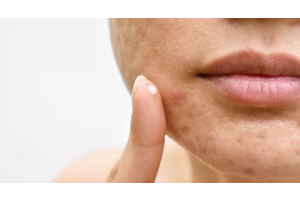Local Storage seems to be disabled in your browser.
For the best experience on our site, be sure to turn on Local Storage in your browser.
The effects of the sun on the skin

How is a tan produced?
By exposing the skin to the sun's rays, the body begins to produce a pigment, called melanin, which absorbs the rays and causes the skin to become tanned to protect itself from the sun.
This body's natural defensive mechanism is not sufficient to counteract the harmful effects of the two types of ultraviolet (UV) rays that reach the skin's surface:
UVA: They are responsible for the skin's tanning by inducing cells to produce melanin, a natural pigment that colors the skin. Although they do not burn, they are not harmless as they penetrate deep into the skin and can cause long-term damage such as premature aging, spots, loss of elasticity and even major injuries.
UVB: These rays are responsible for the redness of the skin.
One of the main functions of the skin is the protection of ultraviolet rays through the formation of melanin and thickening of the horny layer of the skin in front of the sun. The UVB activates the formation of new melanin achieving a late (3-4 days) and lasting pigmentation effect (15 days if there are no more exposures) while the UVA oxidize melanin get an instant effect of short duration. Both types of radiation are harmful and can cause significant sun damage.
Positive effects of the sun
The sun is fundamental to life. In small doses, they have a beneficial effect on physical and emotional aspects:
It also enhances our mood: The sun can be an excellent remedy for some forms of seasonal depression.
It is essential for the synthesis of vitamin D, one of its main functions is to help the body absorb calcium. It thus influences bone and tooth health, but it also influences the proper functioning of muscles, nerves and the immune system.
Activate circulation.
Strengthens the immune system.
Harmful effects of the sun on the skin
Unprotected exposure to the sun causes damage that accumulates day by day on the skin. It has a memory effect, i.e. excess sunlight is recorded on the skin and, when the body has been burned, over time it can cause premature ageing of the skin or, depending on the severity, cause different lesions such as spots, allergies, cancer, etcetera.
1. Appearance of erythema or sunburn. Everyone has ever experienced the unpleasant sensation of burnt skin, the pain and discomfort is enough to promise not to sunbathe again without protection.
The responsible ones are the UVB rays, that although they do not penetrate so deeply in the skin, they have greater energy and produce the lasting pigmentation because they stimulate the production of melanin to the three days of their action. They are the most frequent cause of burns and produce the thickening of the epidermis as a defense against solar radiation. Children and people who have spent a lot of time exposed to the sun without protection can suffer severe symptoms such as blisters, inflammation, fever and even second-degree burns, which must be treated in the emergency with specific medications.
2. Premature aging of the skin. 90% of aging symptoms are caused by the sun. Our grandmothers already knew it, and did not go out without a hat or a scarf. The UVA rays penetrate into the dermis and are responsible for rapid and transient pigmentation when darkening the melanin in a few hours. However, their effects are cumulative and in excess are responsible for premature aging, caused by the deterioration of collagen and elastin that leads to the appearance of wrinkles and sagging skin. If you want to enjoy perfect skin, you better not forget to always carry anti-UVA sun protection throughout the year.
3. Immunosuppression. The sun improves immune defenses, however, an excess of solar radiation can alter the function of white blood cells and weaken the immune system.
4. Appearance of skin tumors. UV rays have the shortest wavelength in the solar spectrum, and this characteristic gives them a great capacity to penetrate tissues. UV rays are able to reach the DNA of the cell nucleus and cause mutations or changes. Most of the sun-damaged cells are repaired or if the damage is large they disappear, but some of these damaged cells remain in the skin and over time can become cancer cells. Examine your skin and periodically observe moles and spots, not forgetting your back and the back of your body.
The types of skin cancer are identified by the cells of the epidermis involved:
Melanomas. Very aggressive malignant skin cancer. It is the first cause of death among skin diseases. Its advance is rapid and takes place in the cells that produce the pigments, the melanocytes.
Carcinomas. The most common cutaneous cancer is the basal cell carcinoma whose origin is the abnormal growth of cells in the lower layer of the epidermis, it usually occurs in elderly people and its progress is slow. Squamous cell carcinoma occurs in the middle layer of the epidermis.
Any change in shape, color, or size should be reviewed by a dermatologist. There are many different types of skin cancer, the best known being melanoma, the incidence of which increases each year with increased exposure to the sun.
5. Blinded by the sun. Prolonged exposure to the sun causes eye damage and can increase up to four times the likelihood of developing cataracts, the leading cause of blindness in the world. Normally the lens of the eye is clear, but when sunlight can damage the retina, the lens becomes opaque to prevent light from entering and a cataract develops. Avoiding it is as simple as wearing sunglasses with the right sunscreen, especially when you do sports outdoors.
6. Allergic to the sun. Sun allergy is a curious term, if you think it is difficult to develop allergy to something so omnipresent in our lives. In reality, sun allergy is mediated by different agents (food, photoprotective creams, perfumes, clothes, medicine, chlorine from the swimming pool) that are in contact with our skin on a regular basis and only cause an allergic reaction when we are exposed to the sun. About 20% of the population develops an allergy to the sun at some point in their lives that manifests itself in red spots, itching and skin rashes. A small number of people are born with genetic diseases that prevent exposure to the sun throughout life.
7.Photoimmunosuppression. Another harmful effect of sunlight is that it can damage cells specializing in immune skin protection. This makes the skin more susceptible to infectious processes such as herpes.
Curiously, it has been found that there is a higher proportion of solar problems such as tumors in poorly sunny countries, while in areas such as Equator the frequency is very low, due to the genetic protection of the dark color of the skin. People pale-skinned have lived in areas with little sunshine until 50 years ago, now with the ease of travel and the custom of going on holiday in sunny areas has boosted rates of tumors and skin problems in light-skinned people.
Now that you know the benefits and harmful effects of the sun, are you going to take care of your skin during these holidays?



